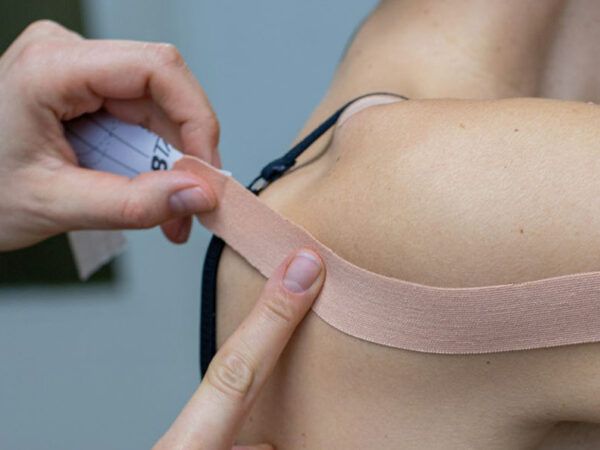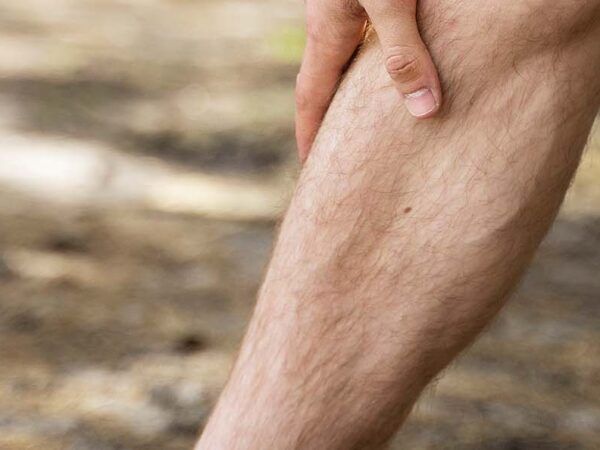What is adhesive capsulitis of the shoulder?
The capsule surrounds an articulation containing the articular cavity and the bones. Adhesive capsulitis of the shoulder, also known as “frozen shoulder”, can be described as a thickening and retraction of the capsule, which begins to adhere to the humeral head. This pathology is characterized by pain, stiffness and a limited functioning of the articulation. The pathophysiology of capsulitis remains little-known, even though two types have been studied. First, there is idiopathic adhesive capsulitis (primary) which occurs spontaneously without predisposing factors and originates from a chronic inflammatory response with fibroblastic proliferation.
There is also secondary adhesive capsulitis which occurs after a shoulder injury or surgery and which can be associated with certain risk factors such as diabetes, a rotator cuff injury, CVA or other cardiovascular diseases that can delay healing.
Pathology development and symptoms
Capsulitis involves three stages of development and evolves on average over a 30-month period.1
Painful phase
Sharp pain, progressive stiffening of the shoulder
Retraction phase
Gradual reduction of pain, marked stiffening of the shoulder
Recovery phase
Recovery, progressive disappearance of symptoms.
How can the physiotherapist intervene?
Plusieurs interventions sont offertes en physiothérapie pour accélérer le processus de guérison. Les interventions les plus efficaces sont les mobilisations articulaires et les exercices.2 Lors des techniques de mobilisations, le thérapeute peut faire des mouvements passifs du membre supérieur et des techniques de mobilisations spécifiques afin d’étirer la capsule articulaire et de permettre une meilleure qualité de mouvement. Le thérapeute prescrira aussi divers exercices en vue d’augmenter le mouvement à l’épaule, étirer la capsule, augmenter la force des stabilisateurs de l’omoplate et de l’épaule et améliorer la posture. D’autres modalités comme l’utilisation d’un TENS ou du courant interférentiel pour la gestion de la douleur1 et le tape neuro-proprioceptif pour améliorer la qualité de mouvement et réduire la douleur peuvent être utilisés.
Dans plusieurs cas, les traitements de physiothérapie sont aussi combinés avec une ou plusieurs injection(s) arthrodistensive(s) afin d’aider à étirer les fibres de la capsule et à soulager la douleur. La combinaison de ces deux méthodes améliore les chances de guérison plus rapide du patient. 2, 3
Votre physiothérapeute chez Kinatex vous guidera à travers les stades d’évolution de la capsulite en vous offrant un plan de traitement complet et adapté à vos besoins afin de vous permettre une guérison rapide et un retour à vos activités!
References
1. Phil Page and Andre Labbe, CLINICAL SUGGESTION ADHESIVE CAPSULITIS: USE THE EVIDENCE TO INTEGRATE YOUR INTERVENTIONS, North American Journal of Sports Physical Therapy, Volume 5, Number 4, December 2010: 266-273 2. E Maund, D Craig, S Suekarran et al., Management of frozen shoulder: a systematic review and cost-effectiveness analysis, Health Technology Assessment 2012; Vol. 16: No. 11: 1-9 3. Bruce Arroll and Felicity Goodyear-Smith, Corticosteroid injections for painful shoulder: a meta-analysis, British Journal of General Practice, March 2005: 224-228[:fr]1. Phil Page and Andre Labbe, CLINICAL SUGGESTION ADHESIVE CAPSULITIS: USE THE EVIDENCE TO INTEGRATE YOUR INTERVENTIONS, North American Journal of Sports Physical Therapy, Volume 5, Number 4, December 2010: 266-273
2. E Maund, D Craig, S Suekarran et al., Management of frozen shoulder: a systematic review and cost-effectiveness analysis, Health Technology Assessment 2012; Vol. 16: No. 11: 1-9
3. Bruce Arroll and Felicity Goodyear-Smith, Corticosteroid injections for painful shoulder: a meta-analysis, British Journal of General Practice, March 2005: 224-228



